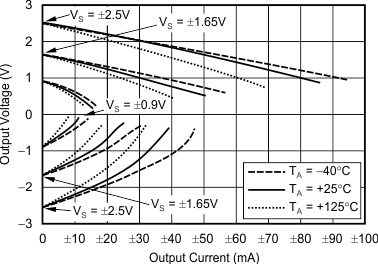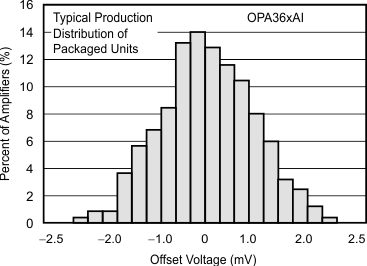JAJS006F September 2002 – June 2018 OPA2363 , OPA2364 , OPA363 , OPA364 , OPA4364
PRODUCTION DATA.
- 1 特長
- 2 アプリケーション
- 3 概要
- 4 改訂履歴
- 5 Device Comparison Table
- 6 Pin Configuration and Functions
-
7 Specifications
- 7.1 Absolute Maximum Ratings
- 7.2 ESD Ratings
- 7.3 Recommended Operating Conditions
- 7.4 Thermal Information: OPA363
- 7.5 Thermal Information: OPA364
- 7.6 Thermal Information: OPA2363
- 7.7 Thermal Information: OPA2364
- 7.8 Thermal Information: OPA4364
- 7.9 Electrical Characteristics
- 7.10 Typical Characteristics
- 8 Detailed Description
- 9 Application and Implementation
- 10Power Supply Recommendations
- 11Layout
- 12デバイスおよびドキュメントのサポート
- 13メカニカル、パッケージ、および注文情報
パッケージ・オプション
メカニカル・データ(パッケージ|ピン)
サーマルパッド・メカニカル・データ
発注情報
7.10 Typical Characteristics
at TA = 25°C, RL = 10 kΩ connected to VS / 2, VOUT = VS / 2, and VCM = VS / 2, (unless otherwise noted)








VOUT = 20-kHz Sinusoid)

| CL = 100 pF |










| CL = 100 pF |